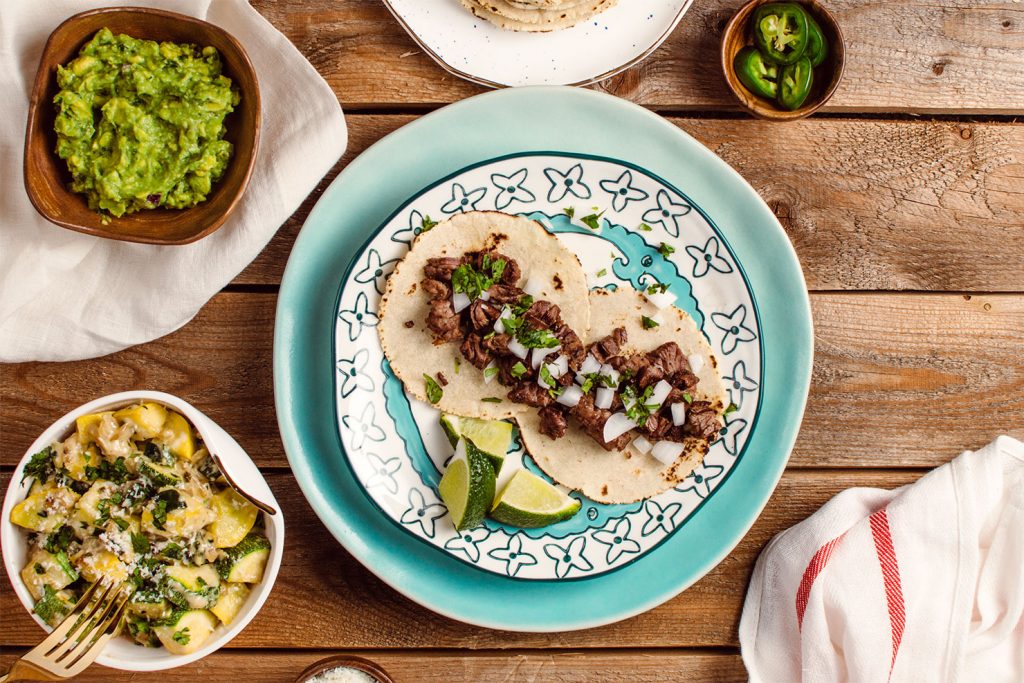
You’ve probably been encouraged to have a “balanced diet” before, right? We’ve all heard it from time to time, but what does it actually mean?
Having a nourishing, balanced diet is essential for your body to function optimally. This means having a solid blend of carbs, proteins, and fats. Below I’ve broken down why each of these macronutrients is important and how they help you feel your best.
Carbs
The carbs you eat are broken down and turned into glucose, which is the body’s preferred source of energy. Simple carbs (sugars, baked foods, breakfast cereals, etc.) are broken down into glucose quickly, spiking your blood sugar and giving you a quick burst of energy. On the flipside, complex carbs (whole grains, fruits, beans, etc.) are higher in fiber and are broken down much slower, giving you long-lasting energy that leaves you feeling full longer.
The carbs you consume are broken down to glucose, the body’s main source of energy. While glucose is essential for nearly all of the body’s functions, it’s particularly important for brain. This is because the brain can’t store glucose the way your muscles and liver can. Believe it or not, even at rest, your brain accounts for about 60% of the glucose used by your entire body. Additionally, incorporating complex carbs in your diet can enhance the health of your digestive system by relieving constipation and decreasing bloating. They can also help you maintain a healthy weight and prevent chronic disease.
Protein
Proteins, which are made up of 20 amino acids, are essentially the building blocks of the body. The amino acids come together and form different proteins in your body. These proteins are involved in nearly every bodily function, making them one of the most crucial nutrients in your diet. While the list of protein functions is nearly endless, I’ll highlight a few of the major ones. It’s probably not surprising that protein supports the growth and maintenance of tissues. But protein does so much more than that! It also provides structure and strength to tissues, helps coordinate processes in the body, facilitates metabolic reactions, and supports your immune system. And that’s just scratching the surface.
Fats
Fats have a pretty bad reputation. Even though they are coming back into the spotlight in some corners of the internet, there are still tons of misunderstandings about what fat does in our bodies. Fat provides 9 calories per gram while protein and carbs only provide 4 calories per gram. This makes dietary fat an excellent source of energy! It also plays a huge role in hormone production, nutrient absorption, and cell development.
You’ll want to be sure to focus on the healthy fats: polyunsaturated and monounsaturated fats. Incorporating these into your diet can help improve your cholesterol and decrease your risk for heart disease. Eating lots of polyunsaturated fats is a great way to sneak in those healthy omega-3 fatty acids that are known to improve inflammation in the body.
How to Combine Foods
So now that you know why you should incorporate a blend of carbs, proteins, fats into your diet, how do you combine them?
Let’s start with something simple: an apple. Reaching for an apple by itself will cause your blood sugar to rise pretty quickly. This is because apples are high in carbs and low in fat and protein. Simply adding a handful of nuts or a scoop of peanut butter to your apple will cause your blood sugar to go up less and slower. This is because the fat and protein provided by the nuts slows down how quickly the carbs are digested into sugar in your body. Incorporating sources of fat and protein into your meals and snacks is a great way to improve satiety and manage your blood sugar levels.
If you’re looking for some quick ways to add fats and proteins into your diet, here are a few tips-and-tricks:
- Add nut butter to your smoothies
- Drizzle olive oil (or toss in a few olives) on your salad
- Sprinkle nuts and seeds on salads or mix into yogurt
- Chop up a hard boiled egg to add to your meal
- Prepare your veggies in oil or melted butter
- Snack on nuts and seeds instead of pretzels and chips
How to Balance Your Plate
The Plate Method is a popular strategy used to visually plan out your meals without weighing and measuring all of your portions. Essentially, you want your plate to look like this:
- 50% non-starchy vegetables. Lettuce, cabbage, peppers, tomatoes, broccoli, etc.
- 25% protein and fat. Fish, meat, poultry, eggs, cheese, etc.
- 25% carbohydrates. Grains, beans, legumes, starchy veggies, fruit, milk, yogurt, etc.
In other words, you want to shoot for about 2 cups of veggies, 3-4 oz of protein, and ½-1 cup of complex carbs. Looking at balanced meals through the eyes of a visual (i.e. the plate method) is significantly less stressful and time consuming than measuring out all of your portions. Just keep in mind that the general recommendations are to get 45-65% percent of your calories from carbs, 20-35% from fat, and 10-35% of calories from protein.
